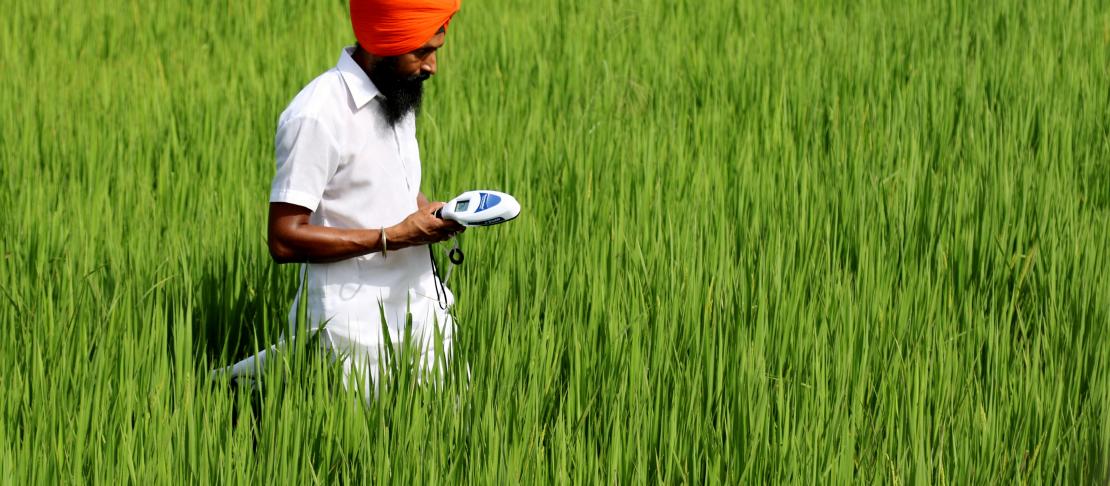Climate-smart technologies fuel adaptation in rural India

Solar powered irrigation pumps are one of many technologies helping to develop Climate-Smart Villages across India.
Originally posted on the Guardian
Although little seems to have changed in central Gujarat, India, for decades, just outside the village of Thamna, solar panels stand in stark contrast to the surrounding dirt roads and rickshaws. This 21st century technology is used by farmer Raman Bhai Parmar, 65, and fuels water pumps that irrigate his bananas, rice and wheat.
A CCAFS project is promoting technologies to increase the adaptive capacity of rural Indians and aims to create 1,000 Climate-Smart Villages across six Indian states including Punjab and Gujarat. These states are the key producers of the country’s key export crops, wheat and basmati rice.
Although pumping groundwater for irrigation has contributed to increased productivity and food security, these are threatened by groundwater depletion and rising temperatures, which are expected to rise by 5˚C by 2080. Wheat is particularly vulnerable to heat stress and environmental shocks such as delayed monsoons and intense rainfall, which further limit yields.
The pilot solar energy pump which Parmar uses is one of several solutions offered by the project, which aims to help farmers mitigate climate change impacts while still increasing yields and profits. The pumps not only provide energy, but also a financial incentive to conserve water as they can sell excess energy back to the grid, relieving stress on depleted aquifers.
This makes a change from government subsidies on diesel-powered pumps which provided little incentive to limit their use and, importantly, the climate-smart technologies are gaining acceptance among communities.
This pilot has already seen success. Last quarter Parmar, whose annual income from crops is roughly 65,000 rupees (£652), received a 7,500 rupees (£75) cheque for producing solar energy.
Similarly, Vikas Chaudhary, 34, of Taraori, Haryana, who farms 35 acres of rice, maize and wheat adopted technologies such as laser-guided land leveling of his fields. He reports that this has conserved 20% of water resources in his fields and has increased his yields by 15% thanks to greater precision in seeding, tillage and measuring the moisture of soils.
Chaudhary also uses a handheld crop sensor called a Green Seeker to assess crop health, a mobile phone app helps him calculate how much fertilizer to apply throughout the growing season and he avoids tilling his fields, which helps the soil retain moisture and lowers costs as well as greenhouse gas emissions.
This cross-post is based on an original piece written for the Guardian by Lisa Palmer, a journalist and a fellow at the National Socio-Environmental Synthesis Center (SESYNC).
Marie Quinney, the author of this post, is a Visiting Researcher at the International Center for Tropical Agriculture CIAT.



